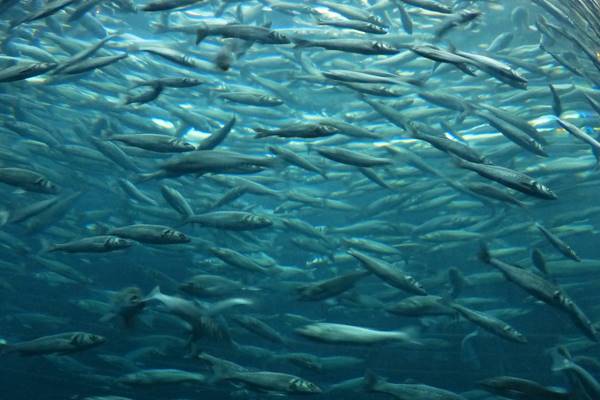Hangenberg Event: Extinction Warnings From The Past
The Hangenberg event was a large-scale extinction event that occurred some 359 million years ago. The anoxic event led to a global decrease in dissolved oxygen, a vital resource for all organisms. Both terrestrial and aquatic flora and fauna species suffered many losses. Curious to gauge what effects the extinction had on fish of the time, scientists at the University of Pennsylvania set out to investigate. Their tools of choice were fossil records.
By analyzing fish remains from the period, the researchers made some important finds. During that time period, the biggest fish species living appear to have suffered the most after the event. Instead of continuing to enjoy the dominance they had once yielded in food chains, they were slowly phased out by smaller fish that could reproduce much more quickly. The findings could have implications for the current struggle to keep fish stocks worldwide from collapsing under pressures from overfishing.
Fishing for Data From The Hangenberg Event
Making the discovery took a lot of leg work, as scientists amassed a dataset comprising more than 1,120 fish fossils. These ranged in age from 419 to 323 million years. Body-size measurements of the fish, key for the investigation, were gathered from published papers, museum specimens and photographs. If the scientists could only gather small fossil fragments of a fish, they extrapolated its size based on existing knowledge of the fish’s traits.
By bringing it all together, researchers began to notice a trend. The world’s large fish started to be outpaced by their smaller counterparts, which continued for about 40 million years following the extinction event.
Researchers say that a shared ocean ecosystem after the event might have had a few big fish swimming around, but they were far from the norm. Most of the fish would have been tiny, about as big as sardines in many cases. For others, the sizes were bigger, but not by much. Some sharks reached a meter in length, and the rest were less than 10 centimeters long.

A swarming school of sardines. University of Pennsylvania researchers say that most fish in the ocean weren’t much bigger than sardines following a major extinction event. (Credit: Public Domain)
Why Fish Populations Got Smaller
The next question from that point was why. There had to be some external factor that linked up with the massive declines in fish size during the period. To dissect a few of the possible causes, scientists looked at climate models of the time period and compared fish size to things like water temperatures or oxygen levels. But both of those factors were found to be unrelated to the body-size trends seen in fish. As a result, researchers believe that there must be some sort of ecological factor at play. They say the most likely cause comes through what is known as the Lilliput Effect.
The Lilliput Effect is marked by significant reductions in the size of biota that have been affected by extinction-type events. The U. Penn researchers say that the effect is easily understood in the world of wildfires. After the blazes die down, fast-growing grasses quickly take over areas, followed by shrubs and then large trees much later, after the ecosystem has been thriving stably for some time.
Man-Made Extinction
The sort of turnaround seen after a forest fire only takes a few decades, but it is essentially the same process that happened with ocean fish millions of years ago. The researchers want to stress that a lengthy recovery time should be a major concern for ocean fish conservation today.
If overfishing and other human activities continue, there is a risk for another mass extinction event. If that happens, humanity could face severe fish biomass shortages for an incredibly long time.

0 comments